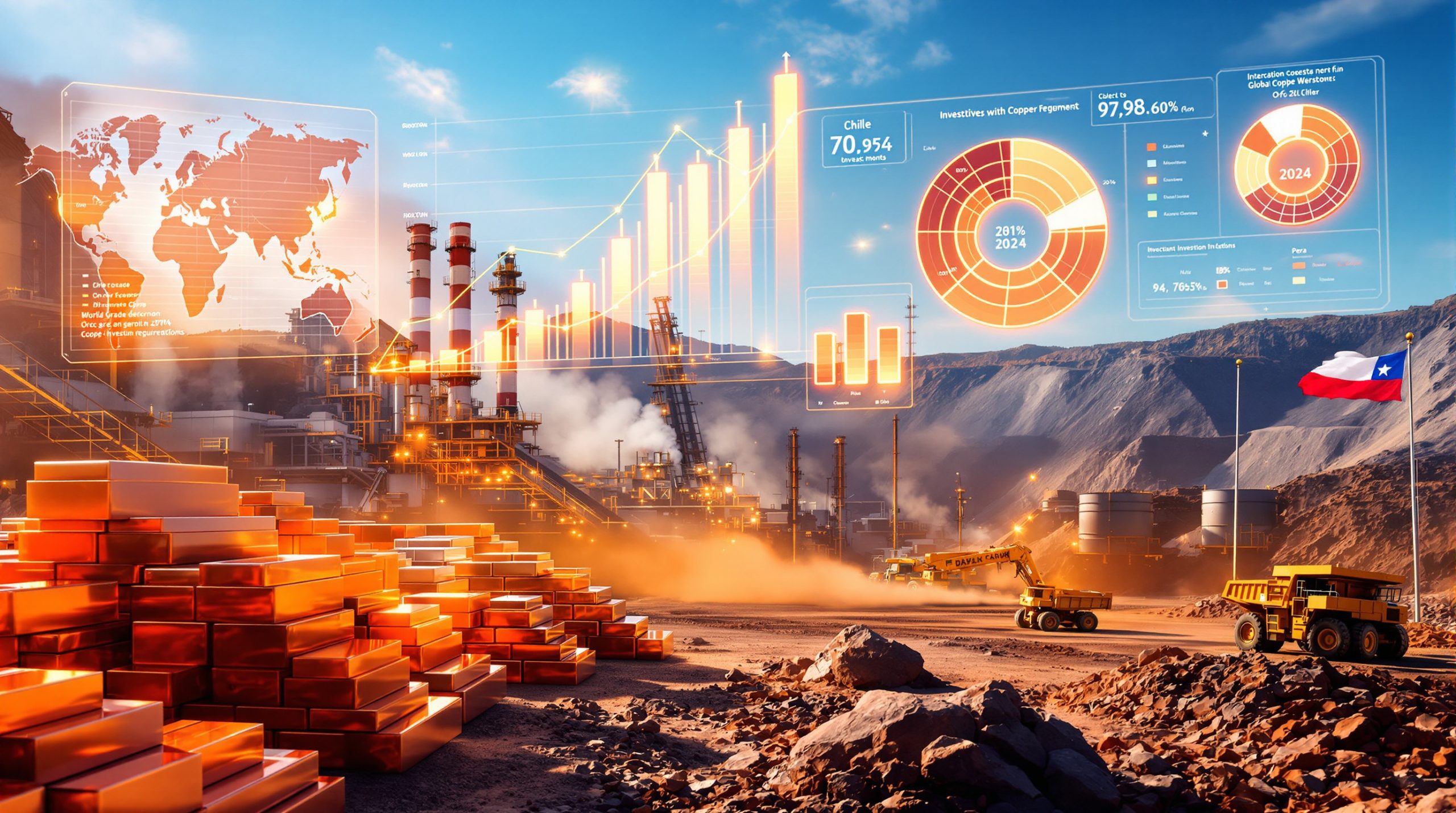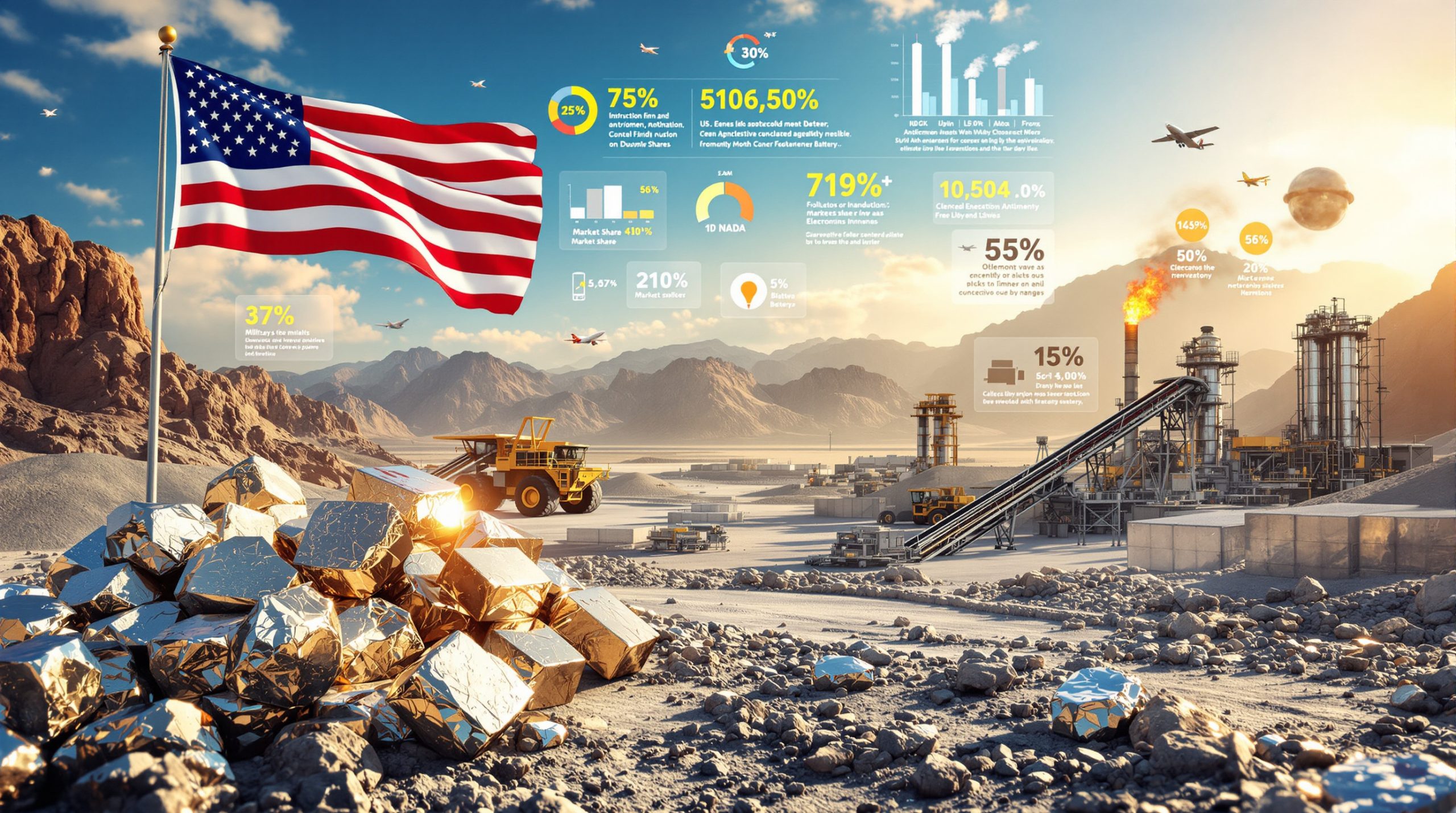How Does the US-China Trade War Affect Copper Prices?
Recent developments in global copper markets highlight the complex interplay between geopolitical tensions and commodity price dynamics. Chile's state copper commission Cochilco issued a significant statement on April 7, 2025, declaring that copper prices have likely peaked for the year, with average prices projected to remain above $4 per pound despite escalating US-China trade disputes. This assessment reflects growing concerns about demand contraction offsetting ongoing supply shortages, creating a precarious balance in markets historically sensitive to industrial activity. The analysis underscores copper's enduring role as a global economic bellwether while revealing new vulnerabilities in an era of renewed protectionism.
Current Copper Price Outlook
Cochilco's April 2025 report establishes critical quantitative benchmarks, projecting annual average copper prices to maintain a floor of $4/lb despite anticipated volatility. This represents a 12% decline from Q1 2025 peaks but remains 23% above the decade average. The commission attributes this resilience to structural supply deficits estimated at 189,000 metric tons for 2025, though warns that persistence of trade tensions could erase these gains. Price stability now hinges on Chinese infrastructure spending maintaining 4.2% annual growth against US tariff threats targeting $60 billion in Chinese metallurgical exports.
Trade War Dynamics
The Trump administration's March 2025 tariff escalation directly impacts copper-intensive industries, with 15% duties proposed on Chinese electrical equipment and construction machinery exports. Cochilco analysts note these sectors account for 41% of global refined copper consumption, creating direct demand-side pressures. "Base metals markets are entering uncharted territory," observed Cochilco's chief economist, "where traditional supply-demand models fail to account for geopolitical weaponization of trade flows." Historical parallels to the 2018-2020 trade war suggest potential price suppression of 18-22% if current measures persist beyond Q3 2025. The ongoing Trump's trade policies impact continues to reshape global commodity markets in unprecedented ways.
What Factors Are Driving Copper Market Volatility?
Supply and Demand Imbalance
2025's supply deficit stems from concurrent production disruptions at three major Chilean mines (representing 9% of global output) and delayed African greenfield projects. However, demand growth forecasts have been revised downward from 3.4% to 2.1% annually, neutralizing scarcity premiums. The International Copper Study Group estimates inventory drawdowns accelerated to 35,000 tons/month in Q1 2025, but warehouse stocks remain 47% above 2020 levels, providing market buffers.
Geopolitical Pressures
Chile's mining ministry reports 73% of copper export contracts now include force majeure clauses addressing trade policy risks, compared to 22% in 2020. This contractual evolution reflects producers' attempts to hedge against sudden demand shocks from tariff implementations. Concurrently, Chinese smelters have increased copper concentrate imports from non-US aligned nations by 19% year-to-date, reshaping traditional supply chains. Recent Chile's copper production trends demonstrate how major producers are adapting to these new market realities.
How Are Copper Price Forecasts Changing?
Cochilco's Market Assessment
The commission's revised modeling incorporates machine learning analysis of 120 geopolitical risk indicators, revealing tariff implementation timelines explain 68% of recent copper futures volatility. This technical shift recognizes markets increasingly pricing political calculus alongside physical fundamentals. Cochilco's stress testing shows a 0.76 correlation between US-China trade rhetoric intensity and copper's 30-day implied volatility.
Economic Indicators
Copper's sensitivity to manufacturing PMI readings has intensified, with a 1-point PMI decline now triggering 2.3% price drops versus 1.4% historically. This amplified response reflects financialization of copper markets, where ETF holdings now represent 14% of annual production compared to 5% in 2020. Understanding these copper price dynamics is crucial for investors navigating the current market turbulence.
What Are the Implications for Global Copper Markets?
Impact on Major Copper Producers
Chile's state-owned Codelco has deferred $2.1 billion in mine upgrades, prioritizing capital preservation amid price uncertainty. Private operators like BHP and Rio Tinto report shifting 18% of projected output to fixed-price forward contracts, compared to 7% in 2024. These risk management strategies suggest producers anticipate prolonged market instability.
Investment Considerations
Institutional investors have reduced copper futures exposure by $4.8 billion since February 2025, reallocating to precious metals. However, options data shows growing interest in long-dated call options, with December 2026 $5/lb strikes seeing 300% volume increases. This bifurcation reflects uncertainty about near-term turbulence versus long-term green energy demand. The global copper market outlook remains positive despite short-term volatility, supported by structural demand from energy transition initiatives.
FAQs About Copper Prices and Trade Tensions
What is the current copper price forecast for 2025?
Cochilco maintains its $4/lb average forecast but warns of Q3 downside risks below $3.80 if US implements threatened tariffs. The 2025 high of $4.58/lb recorded in January remains unlikely to be surpassed given current inventory builds.
How does the US-China trade war affect base metal prices?
Tariffs disrupt copper's dual role as industrial input and financial asset. Immediate demand destruction (estimated at 450,000 tons annually per $50 billion tariff round) conflicts with strategic stockpiling, creating non-linear price responses.
What factors could reverse the negative outlook for copper prices?
Accelerated renewable energy investments requiring 8.5 million tons of copper by 2030 could offset trade impacts, as could resolution of Chilean production bottlenecks estimated at 740,000 tons/year. A de-escalation in US-China trade war would immediately strengthen market sentiment, potentially driving prices back toward early 2025 levels.
Managing Copper Investment Strategies During Trade Wars
Portfolio Hedging Techniques
Professional commodity traders are implementing cross-metal spreading strategies, balancing copper positions against aluminum and zinc to mitigate trade war impacts. These metals historically demonstrate varied responses to tariff implementation, with aluminum typically suffering greater percentage declines (28-32%) while zinc shows more resilience (12-15% declines). Developing effective mining investment strategies has become increasingly important in this volatile environment.
Geological Supply Constraints
Beyond geopolitics, copper markets face structural grade declines averaging 0.27% annually across major producing regions. Modern mines operate at average grades of 0.6% versus 1.2% a decade ago, requiring 50% more ore processing to yield equivalent metal. This underlying supply constraint provides a fundamental price floor despite short-term demand shocks from trade policies.
Regulatory Impact Assessment
Mining jurisdictions are responding differently to trade tensions, with Peru accelerating permitting processes by 37% to capture Chinese demand diverted from US-aligned suppliers. Meanwhile, Chile's regulatory framework emphasizes production stability over expansion, with environmental approvals for major projects declining 22% year-over-year as authorities prioritize market equilibrium over growth.
Looking to Capitalise on Discovery-Driven Stock Opportunities?
Get real-time alerts on significant ASX mineral discoveries straight to your inbox with Discovery Alert, powered by our proprietary Discovery IQ model that transforms complex mineral data into actionable insights for informed investment decisions. Learn why historic discoveries can generate substantial returns by exploring our dedicated discoveries page and begin your 30-day free trial today to position yourself ahead of the market.




